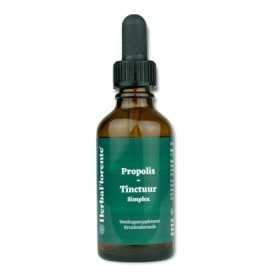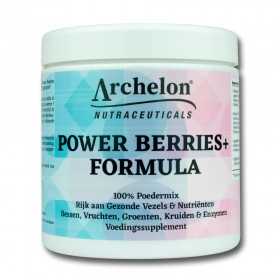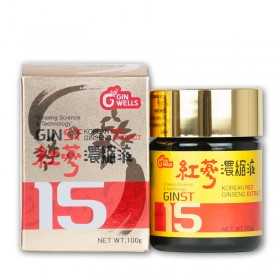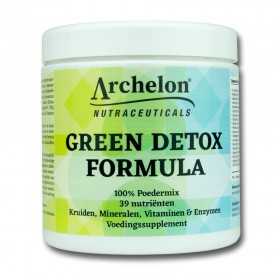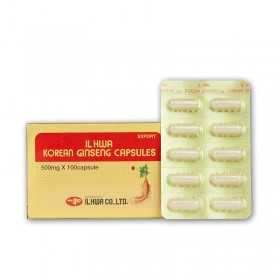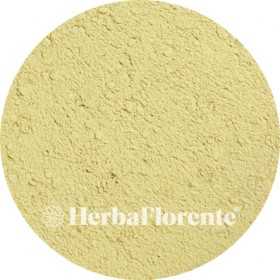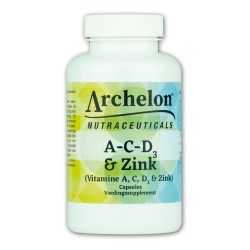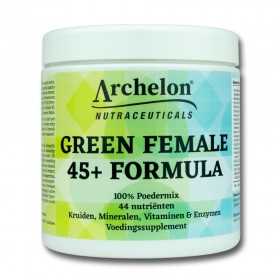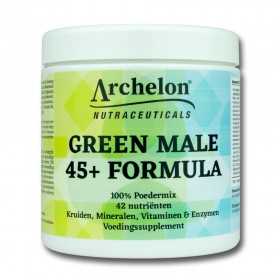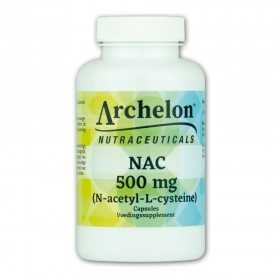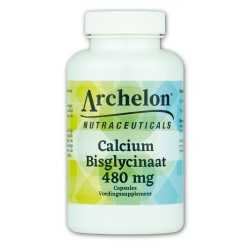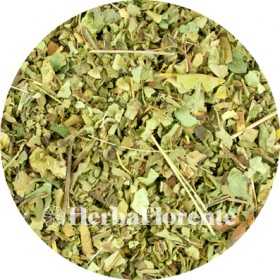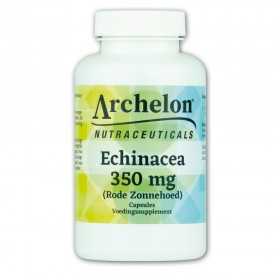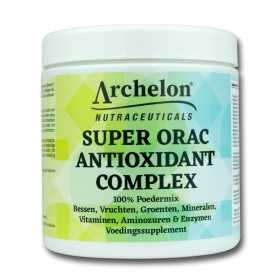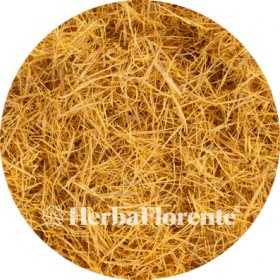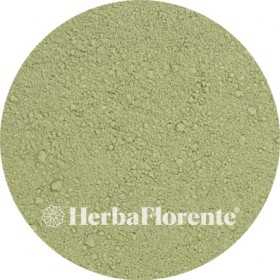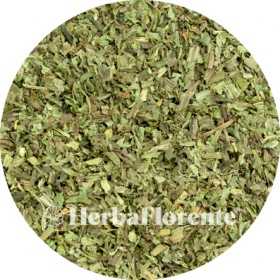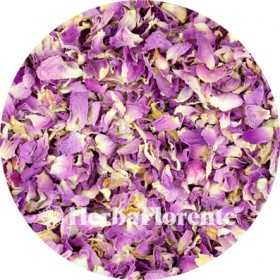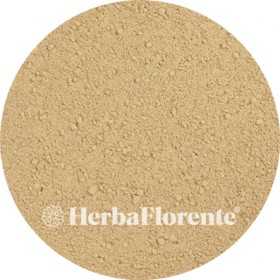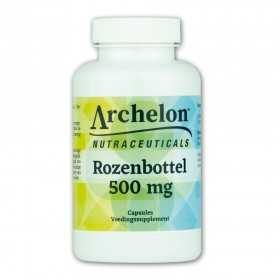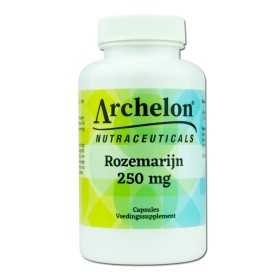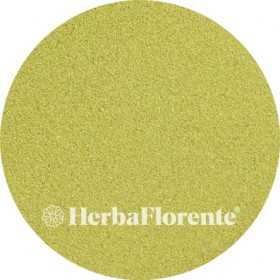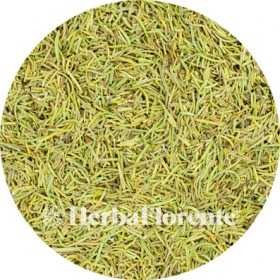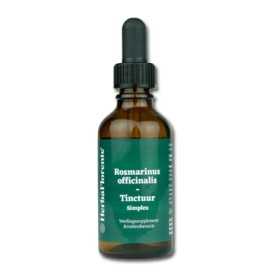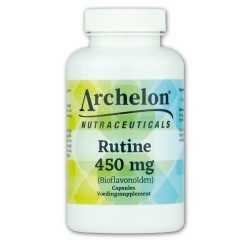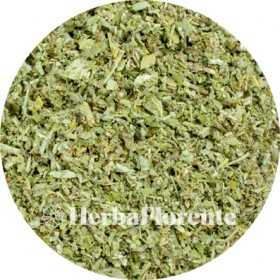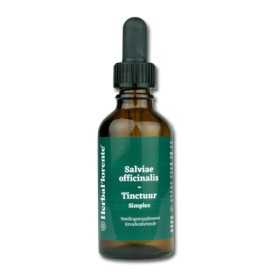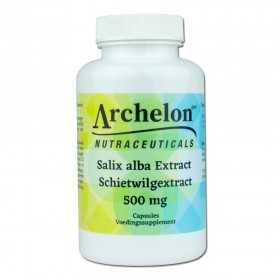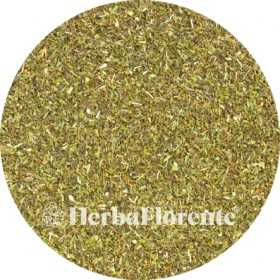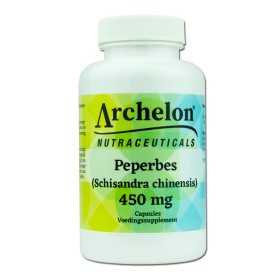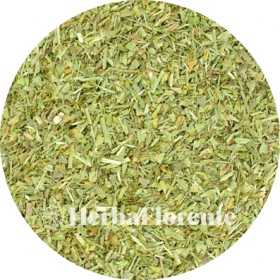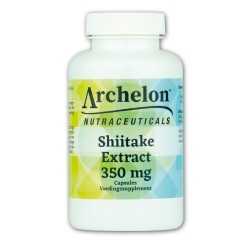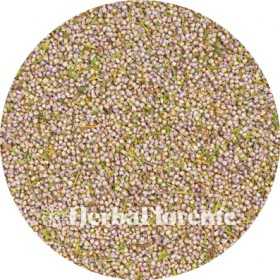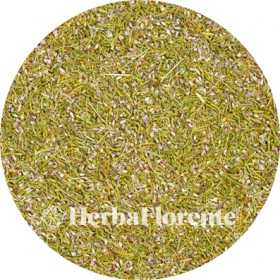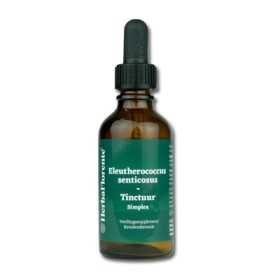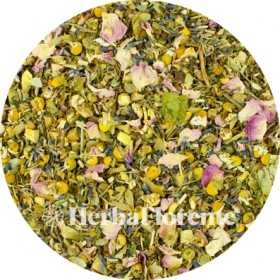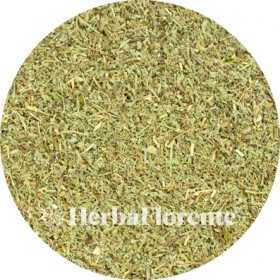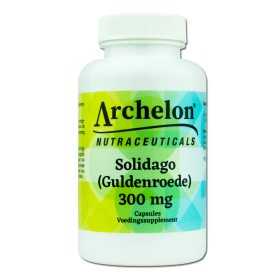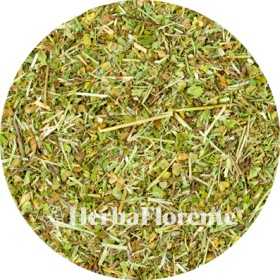Health Goals
There are 390 products.
Ribwort Plantain - Plantaginis lanceolata
Ribwort Plantain - Plantaginis lanceolata - Cut
Rose - Rosae damascena
These flowers are known for their delicate fragrance and are grown commercially for rose oil, both "rose otto" and "rose absolute", which is widely used in perfumery. They are also used to make rose water and "rose concrete". The petals are even edible and are used to flavor dishes, as a garnish, to make herbal tea and to preserve gulkand in sugar. Moreover, the damask rose is the national flower of Iran.
Rose Root - Rhodiola rosea
It contains protective antioxidants that help our body cells. Rose root supports both physical and mental balance in our body. It helps keep the mind clear, improves mood and promotes concentration. Some of the bioactive compounds in rose root include rosavine and salidroside, which are thought to be responsible for Rhodiola rosea's calming and uplifting effects.
Rosehip - 500 mg
After flowering, a rose hip develops, a fleshy flower base with nutty fruits inside. The rose hip is oval or ovoid, red-orange in color, and measures 1-2.5 cm long and 1-1.8 cm wide.
Rose hips are often used for making jam because of their high vitamin C content. They also contain carotene, vitamin B1 and vitamin B2.
Rosemary - 250 mg
The name "rosemary" has its origins in the Latin "ros" (roris), meaning "dew", and "marinus", meaning "sea": "dew of the sea". Since ancient times, by both the ancient Greeks and Romans, Rosmarinus officinalis has been valued for its health-supporting properties. It helps with digestion, strengthens the immune system and contains antioxidants.
Rosemary - Rosmarini officinalis
The name "rosemary" has its origins in the Latin "ros" (roris), meaning "dew", and "marinus", meaning "sea": "dew of the sea". Since ancient times, by both the ancient Greeks and Romans, Rosmarinus officinalis has been valued for its health-supporting properties. It helps with digestion, strengthens the immune system and contains antioxidants.
Rosemary - Rosmarini officinalis - Cut
The name "rosemary" has its origins in the Latin "ros" (roris), meaning "dew", and "marinus", meaning "sea": "dew of the sea". Since ancient times, by both the ancient Greeks and Romans, Rosmarinus officinalis has been valued for its health-supporting properties. It helps with digestion, strengthens the immune system and contains antioxidants.
Rosemary Tincture - Rosmarinus officinalis Tincture
Rosemary (Rosmarinus officinalis L.) is a fragrant, compact shrub belonging to the Lamiaceae family. This versatile herb has been used for centuries for various purposes, both culinary and for health promotion. Originally from Mediterranean regions, the Rosmarinus officinalis displays lush blooms in spring with small, lavender blue flowers.
Rutin - 450 mg
Citrus fruits are particularly rich in rutin, but other foods also contain this substance, such as grapes, the peels of apples, pears, apricots, raspberries, onions, asparagus, tobacco plants, tea, rhubarb, blueberries and elderberries. Rutin also acts as an antioxidant, meaning it protects our cells and tissues from oxidative damage caused by free radicals.
Sage - Salviae officinalis - Cut
Sage is an antioxidant and can be used for menopausal symptoms. In addition, it supports normal menstruation. Sage is a natural soother for the throat, it supports the immune system and contributes to normal digestion.
Sage Tincture - Salviae officinalis Tincture
True sage (Salvia officinalis L.) is a well-known herb that is used for various purposes. It has been used for centuries from China to ancient Rome. All kinds of magical properties were attributed to the little purple flower.
Sage is an antioxidant and can be used for menopausal symptoms. In addition, it supports normal menstruation. Sage is a natural soother for the throat, it supports the immune system and contributes to normal digestion.
Salix alba Extract - Willow Extract (Salicin) - 500 mg
The white willow (Salix alba L.), a common tree in the Netherlands, was examined in 1828 by the German pharmacist Johann Andreas Buchner. He discovered that the bark of the willow is rich in salicin, a special glycoside: a compound of a sugar with a non-sugar part, which only occurs in plants. Salicin supports joint function and contributes to the maintenance of supple muscles.
Savory Wort - Satureja hortensis
In ancient times, the Romans were fond of savory sauce, which was made with vinegar and served with fish and meat dishes in the same way as mint sauce. Most cooks had their own recipes for using savory. They used it in stuffings for veal, in sauces for fish and other dishes, and even in sausages and pork pies.
Schisandra chinensis - 450 mg
Schisandra has been used in traditional Chinese herbal medicine for over 2000 years. Only the berry with its seeds are used, harvested after the first frost and then dried in the sun. Schisandra is known as one of the most important herbs for promoting vitality.
Shepherds Purse - Capsella Bursa postoris
It is an upright plant that can grow between 5 and 60 cm high, and is annual or biennial in nature. Shepherd's purse is winter hardy and usually has a lignified taproot. The sinuously toothed leaves form a rosette around the spindle-shaped root.
The plant is processed into various commercial products. In folk medicine, infusions are used against bleeding and inflammation of the urinary tract, and as a compress on open bleeding wounds. In addition, young rosette leaves can be used in salads or braised in soups.
Shiitake Extract - 350 mg
Shiitake (Lentinula edodes) is a fast-growing, fleshy mushroom with a cap that varies from golden to dark brown. In Asian countries and Russia, mushrooms have been prized as popular dietary supplements for centuries, with shiitake being one of the favorites.
Shrub Heather (Flower) - Erica vulgaris
The shrub heath can grow to a height of 10-100 cm, sometimes even up to 150 cm in certain places. It has hermaphroditic, symmetrical flowers, with the calyx and petals being the same color. Purple flowers appear towards the end of the branches, creating the purple heaths from late July to early September.
Shrub Heather - Erica vulgaris
The shrub heath can grow to a height of 10-100 cm, sometimes even up to 150 cm in certain places. It has hermaphroditic, symmetrical flowers, with the calyx and petals being the same color. Purple flowers appear towards the end of the branches, creating the purple heaths from late July to early September.
Siberian Ginseng Tincture - Eleutherococcus senticosus Tincture
Siberian ginseng (Eleutherococcus senticosus) has had a good reputation in both China and Russia for centuries as a supporter of the immune system. Siberian ginseng root extract is beneficial for memory and concentration.
The carrots are a rich source of beta-carotene, vitamins B1, B2, C and E, and they are high in eleutherosides. It is important not to confuse Siberian ginseng with its Korean variant (Panax ginseng) or the American one (Panax quinquefolius). Not only do the names differ, but also the properties.
Sleep Tight Herbal Tea
Nice before going to sleep
Smooth rupturewort - Herniaria glabra
Originally, the plant was used to treat hernias. It was also used against dropsy and to stimulate the kidneys.
Solidago (Goldenrod) - 300 mg
Solidago supports the kidneys and their function. It can be used for discomfort prior to menstruation and menopausal symptoms. In addition, solidago helps keep the joints flexible, strengthens resistance and contributes to good mental balance.
Speedwell - Veronica officinalis
The plant reaches a height of 10-50 cm and has stems that spread horizontally and then grow upwards. The stems are evenly hairy. The leaves, short-stalked, are elliptical or obovate in shape, with slightly toothed or serrate edges.
Male speedwell blooms from May to August with light blue flowers, which are darkly veined and have a size of 6-8 mm. There are also variants of the plant with dark blue, pink or white flowers. The flowers grow in bunches.
Achieve Your Health Goals with Natural Support
At Eerlijkgezond.com, we believe in the power of nature. Our extensive range of supplements, herbs, vitamins, and minerals has been carefully curated to help you achieve your specific health goals. Whether you're working on a stronger immune system, more energy throughout the day, better digestion, restful sleep, hormonal balance, or supple joints – our natural products provide the support you're looking for.
Why Choose Eerlijkgezond.com? All products in our assortment have been selected based on quality and natural composition. We only work with trusted brands that are transparent about their ingredients and production processes. This ensures your body receives what it deserves: pure, effective, and safe supplements without unnecessary additives.
Your Health, Your Choice Every body is unique and has different needs. That's why we offer a wide range of products for various health goals. Take the time to discover what suits you best and invest in your wellbeing with the natural solutions from Eerlijkgezond.com.

